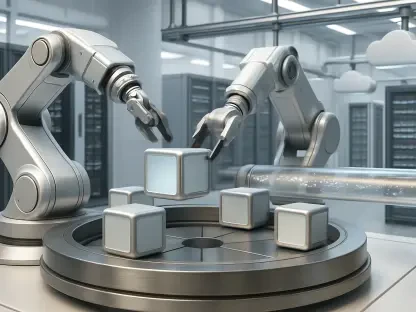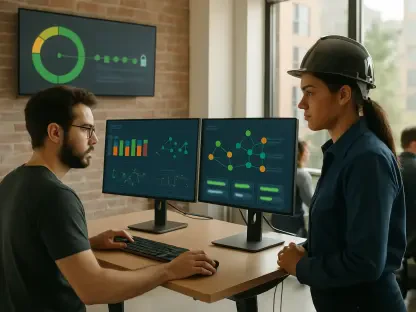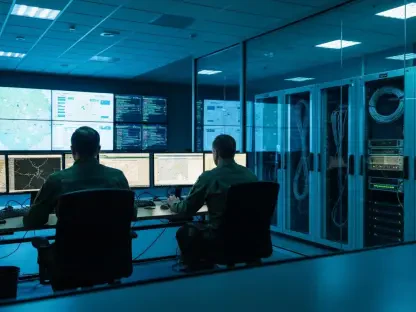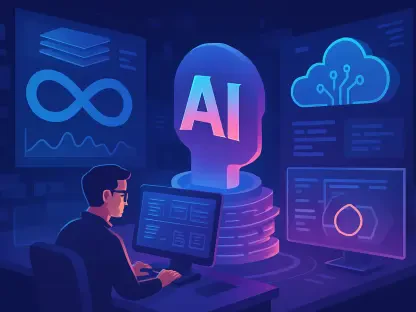Recent advancements in technology continue to push boundaries, blending historical insights with cutting-edge innovations. Over two days, tech enthusiasts, historians, and futurists gathered to explore how past developments shape current trends and future possibilities. This convergence of old and new was exemplified in discussions ranging from the pioneers of early computing to the futuristic innovations presented through open source hardware and AI-driven projects. The event was more than a showcase; it was a testament to the enduring value of historical knowledge and the limitless potential when it intersects with modern ingenuity.
Revisiting the Roots: Early Computing and Historical Reflections
One of the captivating aspects of the gathering was the explicit focus on the roots of modern computing, providing an enriching historical context. Talks such as Tony Abbey’s meticulous recount of rebuilding the EDSAC computer offered more than a mere history lesson; they highlighted the monumental efforts that laid the groundwork for today’s technology. EDSAC, which stands for Electronic Delay Storage Automatic Calculator, was among the first general-purpose computers, created in 1949. This kind of technological archaeology not only provides perspective but also inspires admiration for the early engineers who opened new vistas in the digital realm. The painstaking efforts to recreate such a pioneering machine underscore a key point: understanding the past is vital for envisioning the future.
The historical narrative was further enriched by discussions on influential figures like Dina St Johnston, founder of the UK’s first independent software company in 1959. Her contributions, often overlooked, were pivotal in laying the foundations for the software industry as we know it today. Highlighting these stories serves to fill gaps in popular tech history, shining a light on often unsung heroes whose innovations are the bedrock of contemporary advancements. When attendees examined these contributions, the dialogue inevitably turned toward how drastically the field has evolved since those early days, reinforcing a sense of collective achievement and pointing out areas ripe for further innovation.
Open Source Hardware and Community-Driven Innovation
A striking theme throughout the event was the tremendous potential of open source hardware and the thriving ecosystem it fosters for community-driven innovation. Sessions like the Open Source Hardware Camp illustrated this vividly. Innovators like Jo Hinchliffe showcased open-source rocketry projects, demonstrating that even space technology could benefit from communal collaboration and accessible design principles. Omer Kilic and Stuart Childs went a step further by discussing the complexities of scaling production from single prototypes to mass-produced units. Their insights made it clear that while the initial creative spark is crucial, the journey to widespread adoption requires meticulous planning and problem-solving.
The spirit of collaboration was palpable as participants shared their successes and challenges, driving home the point that open source doesn’t just democratize technology; it catalyzes it. There’s a unique power in community-driven innovation that allows positions held by large corporations to be challenged and reimagined. This was exemplified in projects that ranged from DIY electronics to ambitious undertakings like modular robotics. Each shared endeavor contributed to a larger narrative about the value of open access, shared resources, and the collective ability to push technological boundaries. The sessions reinforced the idea that anyone, equipped with the right knowledge and tools, can contribute to significant scientific and technological progress.
Vintage Computing Revisited: Creativity Meets Technology
The event also played host to numerous sessions dedicated to vintage computing, blending nostalgia with modern engineering. Andy Bennett’s steampunk sunflower project captivated audiences by merging Victorian aesthetic elements with contemporary tech, illustrating the boundless creativity within the maker community. This project, among others, signaled a broader trend of recreating old technologies using modern components, providing a fresh perspective on the utilitarian and artistic potential of historical forms. Roger Light further highlighted this trend with his development of a digital camera sensor, initially costing £50,000 but reinvented with current materials and techniques. These projects not only required significant resources but also an extraordinary level of creativity and commitment.
Equally fascinating was Spencer Owen’s talk on dye sublimation printing onto PCBs. By adapting traditional printing techniques for new uses, Owen underlined a larger theme: the interplay between old and new technologies can yield unexpected, yet profoundly impactful, results. His work with rainbow-colored PCBs to support LGBT charities exemplified how technical ingenuity can intersect with social causes, showcasing the broader societal implications of technological advancements. The recirculation of vintage computing concepts into contemporary projects demonstrates that technological evolution is not always linear. Sometimes, the leap forward requires a glance back, mischievously blending historical craftsmanship with modern technology for innovative outcomes that serve both functional and artistic purposes.
Conclusion: Uniting Knowledge and Innovation
In recent years, technology has made significant strides, continuously blending historical insights with forward-thinking innovations. A two-day event brought together tech enthusiasts, historians, and visionaries to delve into how past developments shape present trends and future possibilities. This fusion of old and new was highlighted through discussions that spanned from the pioneers of early computing to groundbreaking advancements showcased in open-source hardware and AI-driven projects. The event wasn’t just an exhibition; it stood as a powerful reminder of the enduring value of historical knowledge and the immense potential that arises when it merges with modern technology.
Attendees had the rare opportunity to witness how historical milestones pave the way for current innovations, emphasizing the vital role history plays in shaping the future. The conversations were rich, engaging, and at times, eye-opening, offering fresh perspectives on how past achievements continually inspire current progress and future visions. Ultimately, the gathering underscored the limitless possibilities that come from marrying historical understanding with contemporary technological breakthroughs, proving that the past and future are intricately intertwined.









